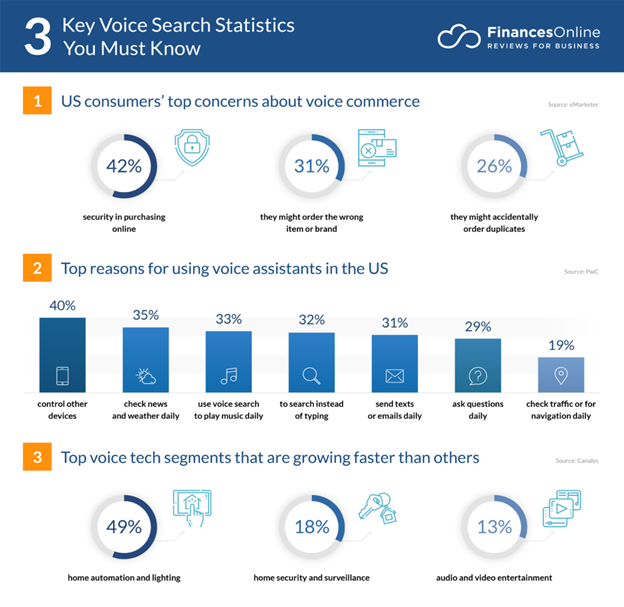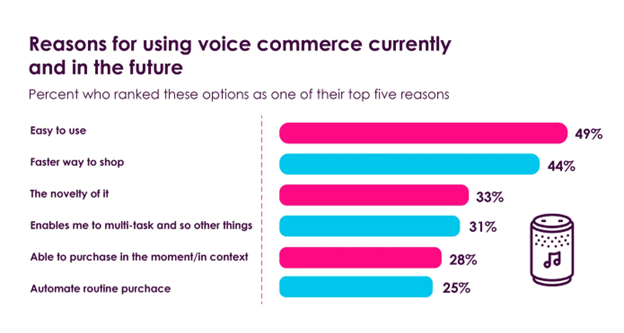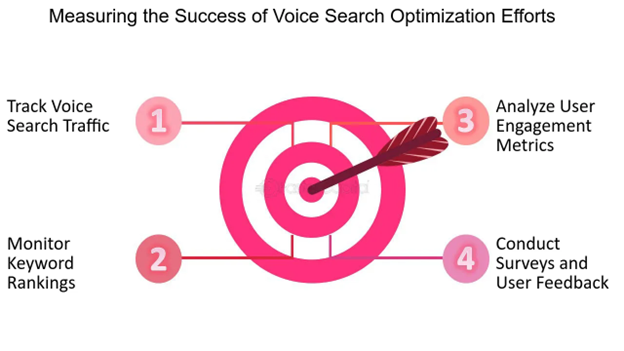Voice Search Optimization for E-commerce: A Comprehensive Guide
Voice search is revolutionizing how we interact with the digital marketplace. Gone are the days when typing was the only way to explore online shops. Now, smart devices listen and respond, making shopping as simple as speaking out loud. This transformation demands a fresh approach to ecommerce optimization, one that tunes into the nuances of spoken queries. The magic behind this shift lies in understanding the conversational nature of voice searches, a stark contrast to the clipped phrases usually typed into a search bar.
For ecommerce sites, this means diving deep into the realm of conversational AI, ensuring their platforms can not only hear but understand and effectively respond to the spoken word. The journey towards voice optimization is not just about keeping pace; it’s about anticipating the future of shopping—one where a question asked aloud from the couch brings the world’s storefronts to your door.
Understanding Voice Search Behavior
Understanding voice search behavior is essential for effective ecommerce optimization in the era of voice-enabled devices. Unlike traditional text-based queries, voice searches tend to be more conversational and natural, reflecting the way people speak in everyday conversations. Research indicates that by 2022, voice shopping is expected to reach $40 billion in the U.S. and £3.5 billion in the UK, highlighting its growing significance in the ecommerce landscape. Furthermore, studies reveal that over 50% of searches will be voice-based by 2024, underlining the rapid adoption of this technology. So, effective voice search is important for your startup to become successful.
To capitalize on voice search, ecommerce platforms must adapt their optimization strategies accordingly. Long-tail keywords and phrases that mimic conversational speech patterns are key to capturing voice search queries effectively. Additionally, understanding the context and intent behind voice queries is crucial for delivering relevant and personalized results to users. By optimizing content to address common questions and providing concise, informative responses, ecommerce sites can enhance their visibility and accessibility in voice search results.
Incorporating local SEO practices is also vital, as voice searches often include location-based queries such as “near me.” By optimizing for local search and maintaining accurate business listings, ecommerce platforms can better serve customers searching for products and services in their vicinity through voice-enabled devices.

Technical SEO for Voice Search
When it comes to voice search for SEO, it encompasses a multifaceted approach aimed at optimizing ecommerce websites for the evolving demands of voice-enabled devices. It begins with prioritizing website speed and mobile responsiveness, as these factors significantly influence user experience, especially on mobile devices where most voice searches occur. Studies indicate that 53% of mobile users abandon websites that take more than three seconds to load, emphasizing the critical nature of speed optimization.
Furthermore, implementing structured data and schema markup plays a pivotal role in enhancing visibility in voice search results. These markup formats provide search engines with contextual information about website content, aiding in better understanding and indexing. By structuring data to align with the conversational nature of voice queries, ecommerce platforms can increase their likelihood of appearing as relevant results for voice search users.
Moreover, securing websites with HTTPS encryption is essential for building user trust and protecting sensitive data. Secure websites not only instill confidence in users but also receive preferential treatment from search engines, potentially boosting rankings in both text and voice search results. By focusing on these technical SEO strategies tailored to voice search, ecommerce websites can position themselves for success in the competitive online landscape.
Content Optimization for Voice Search
Voice search content optimization is a strategic imperative for ecommerce platforms aiming to enhance their visibility and accessibility in the voice search landscape. Unlike traditional text-based queries, voice search queries are conversational and often phrased as questions, reflecting the natural language patterns of users. To effectively capture these queries, ecommerce websites must optimize their content to provide direct and informative answers to common questions related to their products or services.
One effective approach is to develop a comprehensive FAQ section that addresses the most frequently asked questions by customers. By structuring the content in a clear and concise manner, ecommerce platforms can ensure that their answers align with the conversational nature of voice search queries. Additionally, incorporating long-tail keywords and phrases that mimic natural speech patterns can further enhance the discoverability of content in voice search results.
Leveraging user-generated content such as reviews and testimonials can also contribute to content optimization for voice search. Customer feedback provides valuable insights into the language and phrases used by consumers when discussing products or services, enabling ecommerce platforms to tailor their content to align with user preferences and search behaviors. By integrating these strategies, ecommerce platforms can effectively optimize their content for voice search, improving their chances of reaching and engaging with voice search users.
Voice Commerce Strategies

Voice commerce strategies represent the next frontier in ecommerce optimization, offering seamless shopping experiences through voice-enabled devices. Integrating voice search capabilities directly into the shopping experience enables customers to browse, search, and purchase products using voice commands alone. This hands-free approach not only streamlines the shopping process but also enhances accessibility for users with disabilities or mobility limitations.
One innovative example of voice commerce integration is the WooCommerce Odoo integration, which seamlessly connects ecommerce platforms with enterprise resource planning (ERP) systems. By leveraging this integration, businesses can automate order processing, inventory management, and customer relationship management, resulting in greater efficiency and scalability.
Furthermore, personalization is key in voice commerce strategies, as they allow for tailored shopping experiences based on individual preferences and past behavior. By implementing personalized recommendations and targeted promotions, ecommerce platforms can enhance customer satisfaction and drive repeat purchases.
Measuring and Analyzing Voice Search Performance
Measuring and analyzing voice search performance is essential for refining ecommerce strategies and maximizing their effectiveness in the voice search landscape. Utilizing analytics tools to track voice search queries, user engagement, and conversion rates provides valuable insights into the performance of optimization efforts. By analyzing this data, ecommerce platforms can identify trends, patterns, and areas for improvement, enabling them to make informed decisions about future optimization strategies.
Additionally, monitoring key performance indicators such as voice search traffic, click-through rates, and conversion rates allows e-commerce platforms to assess the impact of their optimization efforts and adjust strategies accordingly. This iterative approach to optimization ensures that e-commerce platforms remain competitive and responsive to evolving voice search trends, ultimately driving growth and success in the digital marketplace.
Leveraging Customer Feedback and Website Widgets

This can significantly enhance ecommerce platforms’ optimization efforts for voice search. Customer feedback provides invaluable insights into the language and phrases commonly used by consumers when discussing products or services. By analyzing this feedback, ecommerce platforms can tailor their content to align with user preferences and optimize it for voice search queries.
Additionally, incorporating website widgets that encourage and facilitate customer feedback can further bolster optimization efforts. The right website widget can include features such as review sections, comment boxes, or feedback forms, prompting users to provide input on their experiences. By actively soliciting and incorporating customer feedback into their optimization strategies, ecommerce platforms can ensure that their content resonates with voice search users, ultimately improving visibility, engagement, and conversions. For further insights on how AI can enhance customer interaction, explore https://www.trinetix.com/insights/conversational-ai-examples-and-use-cases to understand the broader applications of AI in ecommerce.
Future of Voice Search in E-commerce
The vuture of voice search in ecommerce holds immense promise, with continued advancements in technology poised to further transform the shopping experience. As voice-enabled devices become increasingly ubiquitous, voice search is expected to play an even larger role in how consumers discover and purchase products online. Ecommerce platforms that embrace and adapt to this shift will gain a competitive edge, offering seamless voice-enabled shopping experiences that cater to the preferences and behaviors of modern consumers.
Furthermore, the integration of artificial intelligence and machine learning algorithms into voice search technologies will enable more personalized and contextually relevant interactions. This heightened level of customization will foster stronger connections between brands and consumers, driving increased loyalty and engagement in the voice-first ecommerce landscape. It is suggested that companies that haven’t started making plans for utilizing voice search should get some mentoring and coaching for leveraging the new tech trend in ecommerce.
Conclusion
Voice search optimization represents a dynamic and essential strategy for ecommerce success in the digital age. By understanding voice search behavior, optimizing content and technical aspects, and integrating innovative solutions like WooCommerce Odoo integration, ecommerce platforms can enhance visibility, improve user experience, and drive sales in a voice-activated world. As voice search continues to shape consumer behavior, the ecommerce platforms that adapt and innovate will thrive, offering customers a seamless, conversational interface with their favorite brands.




